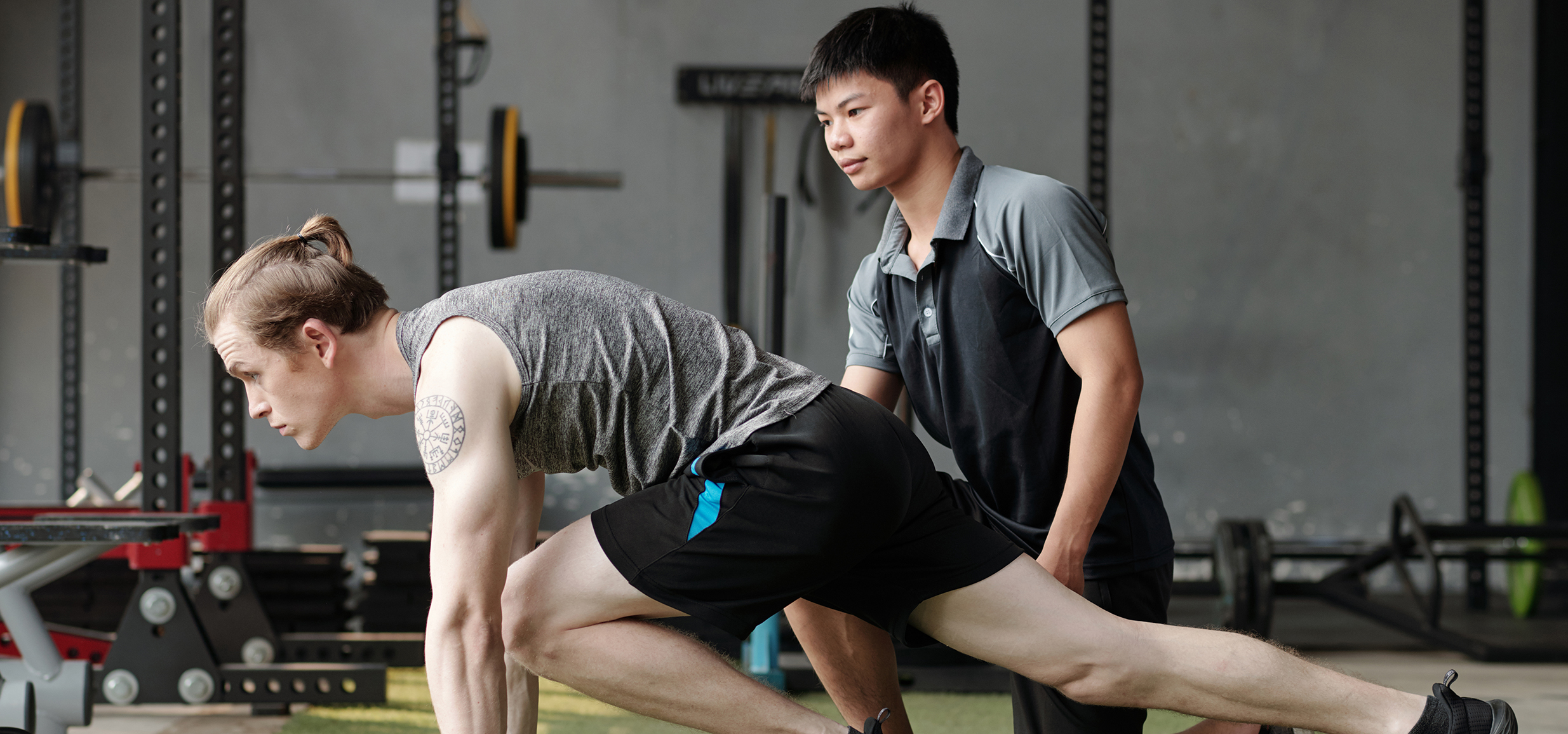

Enhancing Athletic Performance
The Science Behind Sports Performance Programs
At Kinetic Physical Therapy and Wellness in Greenville, NC, we are dedicated to helping athletes of all levels achieve their peak performance through our specialized athletic performance programs. Our one-on-one approach ensures that each athlete receives personalized attention in a professional, yet colorful and vibrant atmosphere. In this blog post, we will explore the science behind our sports performance programs and the principles and techniques used to help athletes reach their full potential.
Understanding Athletic Performance
Athletic performance encompasses various aspects of physical and mental conditioning that contribute to an athlete’s ability to perform at their best. Key components include strength, speed, endurance, flexibility, and mental toughness. Our sports performance programs at Kinetic Physical Therapy and Wellness are designed to optimize these components through evidence-based practices and cutting-edge techniques.
Principles of Athletic Performance Programs
Individualized Assessment and Goal Setting
The foundation of any effective sports performance program is a thorough assessment of the athlete’s current abilities, strengths, weaknesses, and goals. At Kinetic Physical Therapy and Wellness, we conduct comprehensive evaluations to understand each athlete’s unique needs. Based on this assessment, we set realistic and achievable goals that guide the training process.

Progressive Overload
Progressive overload is a principle that involves gradually increasing the intensity, duration, and complexity of training to continually challenge the body and stimulate improvement. This principle ensures that athletes consistently push their limits and avoid plateaus in their performance.
Specificity
Training should be specific to the sport and the athlete’s position or role within that sport. Specificity ensures that the exercises and drills performed during training closely mimic the movements and demands of the actual sport, leading to more effective and relevant improvements in performance.
Periodization
Periodization is the systematic planning of athletic training that involves varying the training intensity and volume over specific periods to prevent overtraining and optimize performance. This approach helps athletes peak at the right time, such as during competition season, and allows for adequate recovery and adaptation.
Techniques Used in Athletic Performance Programs
Strength and Conditioning
Strength and conditioning are fundamental components of sports performance programs. Strength training focuses on building muscle mass, power, and endurance, while conditioning improves cardiovascular fitness and overall stamina. Exercises such as weightlifting, plyometrics, and circuit training are commonly used to enhance these attributes.
Speed and Agility Training
Speed and agility are crucial for many sports, and specialized drills are designed to improve these qualities. Techniques such as sprint intervals, ladder drills, and cone drills help athletes increase their acceleration, deceleration, and change of direction speed.
Flexibility and Mobility
Flexibility and mobility training are essential for preventing injuries and improving the range of motion. Stretching exercises, yoga, and dynamic warm-ups are incorporated into our programs to enhance flexibility and ensure that athletes can move efficiently and effectively.
Endurance Training
Endurance is vital for sustaining performance over long periods. Endurance training includes aerobic exercises such as running, cycling, and swimming, as well as high-intensity interval training (HIIT) to improve both aerobic and anaerobic capacity.
Sport-Specific Drills
Sport-specific drills are designed to replicate the movements and scenarios encountered in the athlete’s sport. These drills help improve technical skills, decision-making, and overall performance in a realistic context.
Recovery and Regeneration
Recovery is a critical aspect of any sports performance program. Techniques such as active recovery, massage therapy, and cryotherapy are used to promote healing, reduce muscle soreness, and prevent injuries. Adequate rest and proper nutrition are also emphasized to support the body’s recovery process.
The Role of Technology in Sports Performance
At Kinetic Physical Therapy and Wellness, we leverage advanced technology to enhance our sports performance programs. Tools such as motion analysis software, wearable fitness trackers, and biofeedback devices provide valuable data on an athlete’s performance, allowing for precise monitoring and adjustments to their training regimen. This data-driven approach ensures that our athletes receive the most effective and efficient training possible.
Mental Conditioning and Sports Psychology
Mental toughness is a crucial component of sports performance. Our programs incorporate sports psychology techniques to help athletes develop focus, confidence, and resilience. Visualization, goal setting, and mindfulness practices are used to enhance mental strength and improve overall performance. Athletes learn to manage stress, maintain concentration, and stay motivated, even in high-pressure situations.
At Kinetic Physical Therapy and Wellness, our sports performance programs are designed to help athletes of all levels achieve their peak performance. By combining individualized assessments, evidence-based training principles, advanced technology, and mental conditioning, we provide a comprehensive approach to athletic development. Whether you’re a young athlete aspiring to reach new heights or a seasoned professional looking to break barriers, our team is here to support your journey to success. Embrace the science behind sports performance and unlock your full potential with Kinetic Physical Therapy and Wellness.
Please Share
categories
Recent Posts

Enhancing Athletic Performance
The Science Behind Sports Performance Programs
At Kinetic Physical Therapy and Wellness in Greenville, NC, we are dedicated to helping athletes of all levels achieve their peak performance through our specialized athletic performance programs. Our one-on-one approach ensures that each athlete receives personalized attention in a professional, yet colorful and vibrant atmosphere. In this blog post, we will explore the science behind our sports performance programs and the principles and techniques used to help athletes reach their full potential.
Understanding Athletic Performance
Athletic performance encompasses various aspects of physical and mental conditioning that contribute to an athlete’s ability to perform at their best. Key components include strength, speed, endurance, flexibility, and mental toughness. Our sports performance programs at Kinetic Physical Therapy and Wellness are designed to optimize these components through evidence-based practices and cutting-edge techniques.
Principles of Athletic Performance Programs
Individualized Assessment and Goal Setting
The foundation of any effective sports performance program is a thorough assessment of the athlete’s current abilities, strengths, weaknesses, and goals. At Kinetic Physical Therapy and Wellness, we conduct comprehensive evaluations to understand each athlete’s unique needs. Based on this assessment, we set realistic and achievable goals that guide the training process.

Progressive Overload
Progressive overload is a principle that involves gradually increasing the intensity, duration, and complexity of training to continually challenge the body and stimulate improvement. This principle ensures that athletes consistently push their limits and avoid plateaus in their performance.
Specificity
Training should be specific to the sport and the athlete’s position or role within that sport. Specificity ensures that the exercises and drills performed during training closely mimic the movements and demands of the actual sport, leading to more effective and relevant improvements in performance.
Periodization
Periodization is the systematic planning of athletic training that involves varying the training intensity and volume over specific periods to prevent overtraining and optimize performance. This approach helps athletes peak at the right time, such as during competition season, and allows for adequate recovery and adaptation.
Techniques Used in Athletic Performance Programs
Strength and Conditioning
Strength and conditioning are fundamental components of sports performance programs. Strength training focuses on building muscle mass, power, and endurance, while conditioning improves cardiovascular fitness and overall stamina. Exercises such as weightlifting, plyometrics, and circuit training are commonly used to enhance these attributes.
Speed and Agility Training
Speed and agility are crucial for many sports, and specialized drills are designed to improve these qualities. Techniques such as sprint intervals, ladder drills, and cone drills help athletes increase their acceleration, deceleration, and change of direction speed.
Flexibility and Mobility
Flexibility and mobility training are essential for preventing injuries and improving the range of motion. Stretching exercises, yoga, and dynamic warm-ups are incorporated into our programs to enhance flexibility and ensure that athletes can move efficiently and effectively.
Endurance Training
Endurance is vital for sustaining performance over long periods. Endurance training includes aerobic exercises such as running, cycling, and swimming, as well as high-intensity interval training (HIIT) to improve both aerobic and anaerobic capacity.
Sport-Specific Drills
Sport-specific drills are designed to replicate the movements and scenarios encountered in the athlete’s sport. These drills help improve technical skills, decision-making, and overall performance in a realistic context.
Recovery and Regeneration
Recovery is a critical aspect of any sports performance program. Techniques such as active recovery, massage therapy, and cryotherapy are used to promote healing, reduce muscle soreness, and prevent injuries. Adequate rest and proper nutrition are also emphasized to support the body’s recovery process.
The Role of Technology in Sports Performance
At Kinetic Physical Therapy and Wellness, we leverage advanced technology to enhance our sports performance programs. Tools such as motion analysis software, wearable fitness trackers, and biofeedback devices provide valuable data on an athlete’s performance, allowing for precise monitoring and adjustments to their training regimen. This data-driven approach ensures that our athletes receive the most effective and efficient training possible.
Mental Conditioning and Sports Psychology
Mental toughness is a crucial component of sports performance. Our programs incorporate sports psychology techniques to help athletes develop focus, confidence, and resilience. Visualization, goal setting, and mindfulness practices are used to enhance mental strength and improve overall performance. Athletes learn to manage stress, maintain concentration, and stay motivated, even in high-pressure situations.
At Kinetic Physical Therapy and Wellness, our sports performance programs are designed to help athletes of all levels achieve their peak performance. By combining individualized assessments, evidence-based training principles, advanced technology, and mental conditioning, we provide a comprehensive approach to athletic development. Whether you’re a young athlete aspiring to reach new heights or a seasoned professional looking to break barriers, our team is here to support your journey to success. Embrace the science behind sports performance and unlock your full potential with Kinetic Physical Therapy and Wellness.
Please Share






